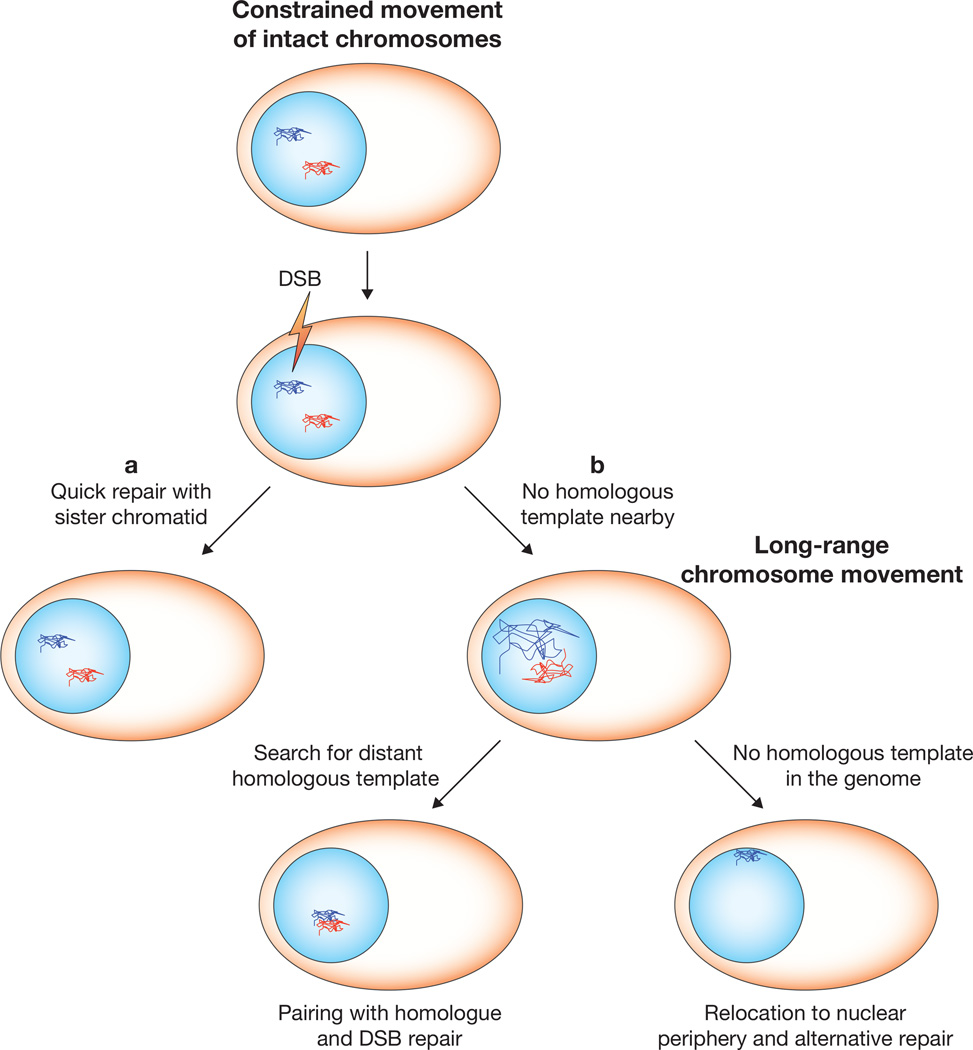Figure 1.
DNA double-strand breaks (DSBs) promote chromosome movement. Homologous chromosomes (red and blue) reside far apart from each other and their movement is constrained. (a) When one is broken, it can be repaired with a sister chromatid template located nearby. (b) When there is no template available in the vicinity, the broken chromosome explores the nucleus in search of a homologous sequence, and then pairs with it for DSB repair. When a homologous sequence is not present, the broken chromosome relocates towards the nuclear envelope for alternative repair mechanisms.

